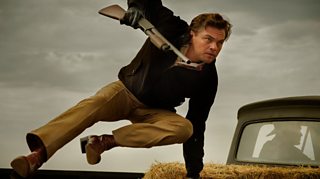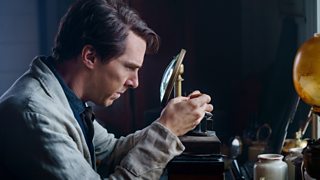The Current War
Not to be confused with any Previous War. Mind you, the previous cut of this film was shown to derision at the Toronto Film Festival in 2017. If this is the final, approved version, the earlier one must have been dire.

This is less about invention and more about naked commercial applications.
Making the battle between Thomas Alva Edison and George Westinghouse riveting and audience friendly was always going to be difficult. Yet that rivalry literally changed modern society forever, because it was about generating wholesale electricity and, more significantly, distributing it across the world via wires, cables and grids. This both powered existing machinery and made possible other inventions that could only work via electric currents. Our communications world is predicated on this. Small scale electricity production already existed but the War of the Currents in the 1880s was about which current, DC (Edison) or AC ( Westinghouse) was the better, the safer, the cheaper.
Thus this is less about invention and more about naked commercial applications. While Westinghouse was no saint, Edison was an extremely clever innovator but could be an absolute scoundrel, with most of his ‘inventions’ derived from other, more original prototypes. He either ignored copyright, bought out other inventors or crushed them. One of my many problems with this film is that Benedict Cumberbatch’s Edison is not devious enough - although that might be the screenplay’s fault. Like much in the film, it is intelligent but stagey and stodgy.

Michael Shannon’s Westinghouse is more solidly realised, as one might expect. Their deep rivalry and exchanges are wordy because the ‘War’ was extremely complex. The role of Serbian-American Nikola Tesla (Nicholas Hoult), who obtained a US patent for a polyphase AC induction motor in 1888, is shoehorned in, possibly because David Bowie’s Tesla in The Prestige and the present automobile company of that name give Tesla’s name a new currency. Important European contemporary research and development figures, including Englishman Joseph Swan, are ignored.

The art and production design is excellent and visually arresting.
Of the other main characters, Samuel Insull (Tom Holland), Edison’s assistant and a utilities magnate, is underwritten, as is that of JP Morgan (Matthew McFadyen). The most egregious weakness is that the two female leads, Tuppence Middleton and Katherine Waterston are given flimsy and stereotypical support roles. Was it a case of “We Have To Have Women In Here Somewhere”?
Inevitably, in order to make the film more ’exciting’ and cinematic, a lot of screen time is given over to the fatalities of overhead wires, the experiments on animals, and the debate about the use of electricity as a means of execution. I also suspect that the director opted for a filming style that employs a lot of handheld camera work, as that seems to be more flashy and cinematic. I just found it annoying after a while. The art and production design is, however, excellent and visually arresting, (meaning that the dialogue isn’t).
As this is really a story about big American business companies and their legal and illegal machinations, it could have been more relevant to our understanding of today’s mega-corporations bid to take over the world if it had been presented, not as a single feature film, but as a high end TV drama series.
About this Blog

The Arts Show’s resident film buff, Mike Catto is a seasoned film critic, educator, and historian. One day the film of Mike Catto’s life will be made, but we haven’t found the actor to play him yet.
Film

Booksmart - 24 hours left to party!
Beanie Feldstein and Kaitlyn Dever star in what has been dubbed the female 'Superbad'.








